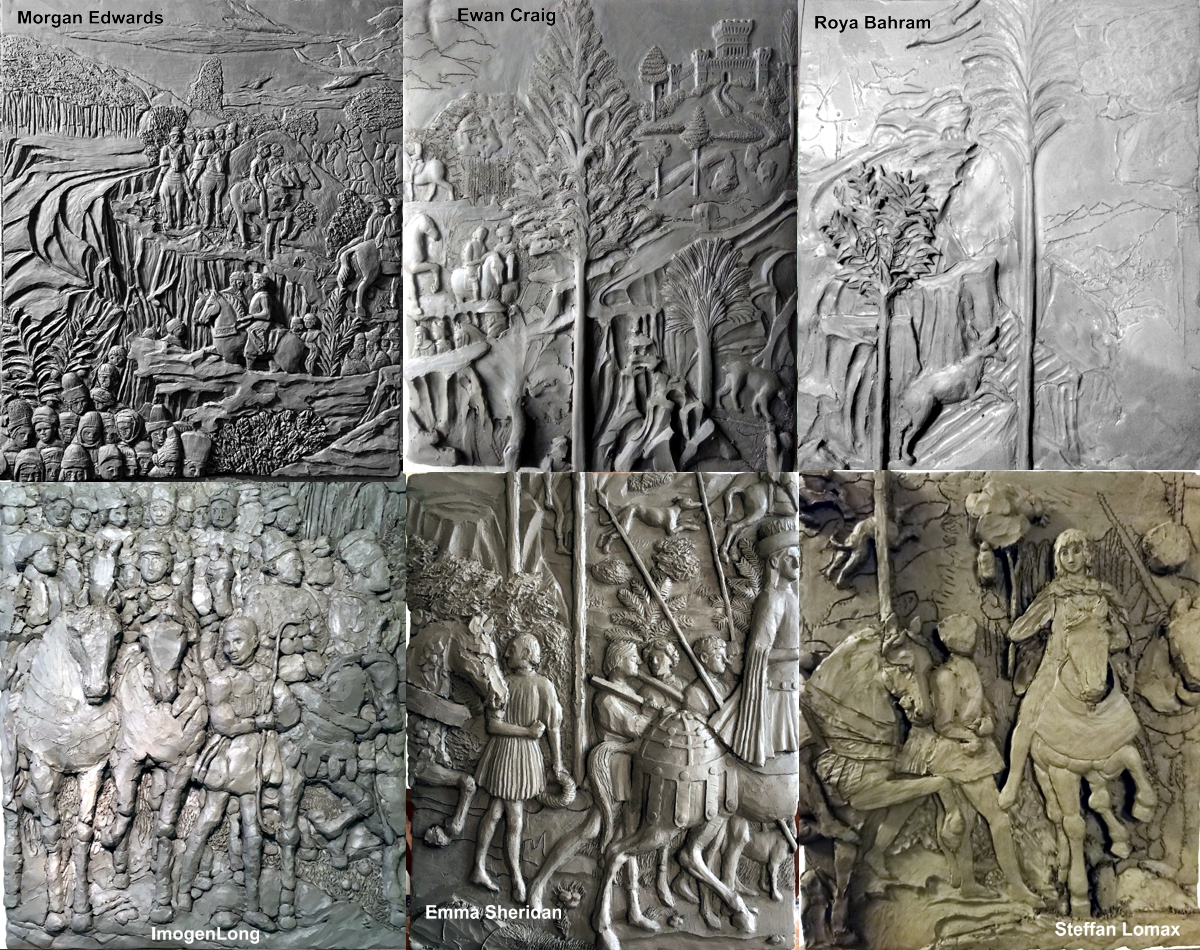 ‘Journey of the Magi to Bethlehem’ by Benozzo Grozzoli, modelled by Historic Carving 2nd year students Morgan Edwards, Ewan Craig, Roya Bahram, Imogen Long, Emma Sheridan and Steffan Lomax.
‘Journey of the Magi to Bethlehem’ by Benozzo Grozzoli, modelled by Historic Carving 2nd year students Morgan Edwards, Ewan Craig, Roya Bahram, Imogen Long, Emma Sheridan and Steffan Lomax.
During the Spring Term, students in the second year of both the stone and wood BA Historic Carving courses, have been working on a collaborative transcription relief project based on ‘Journey of the Magi to Bethlehem’ by Benozzo Grozzoli and ‘Peasant Wedding’ by Pieter Bruegel the Elder.
A particularly ambitious project, each student was given one section of the paintings to transcribe into relief in clay. The measurements and proportions of each section had to be completely exact so they could sit together to form the full image – quite a feat considering the students were all working from home and studying online due to Lockdown #3.
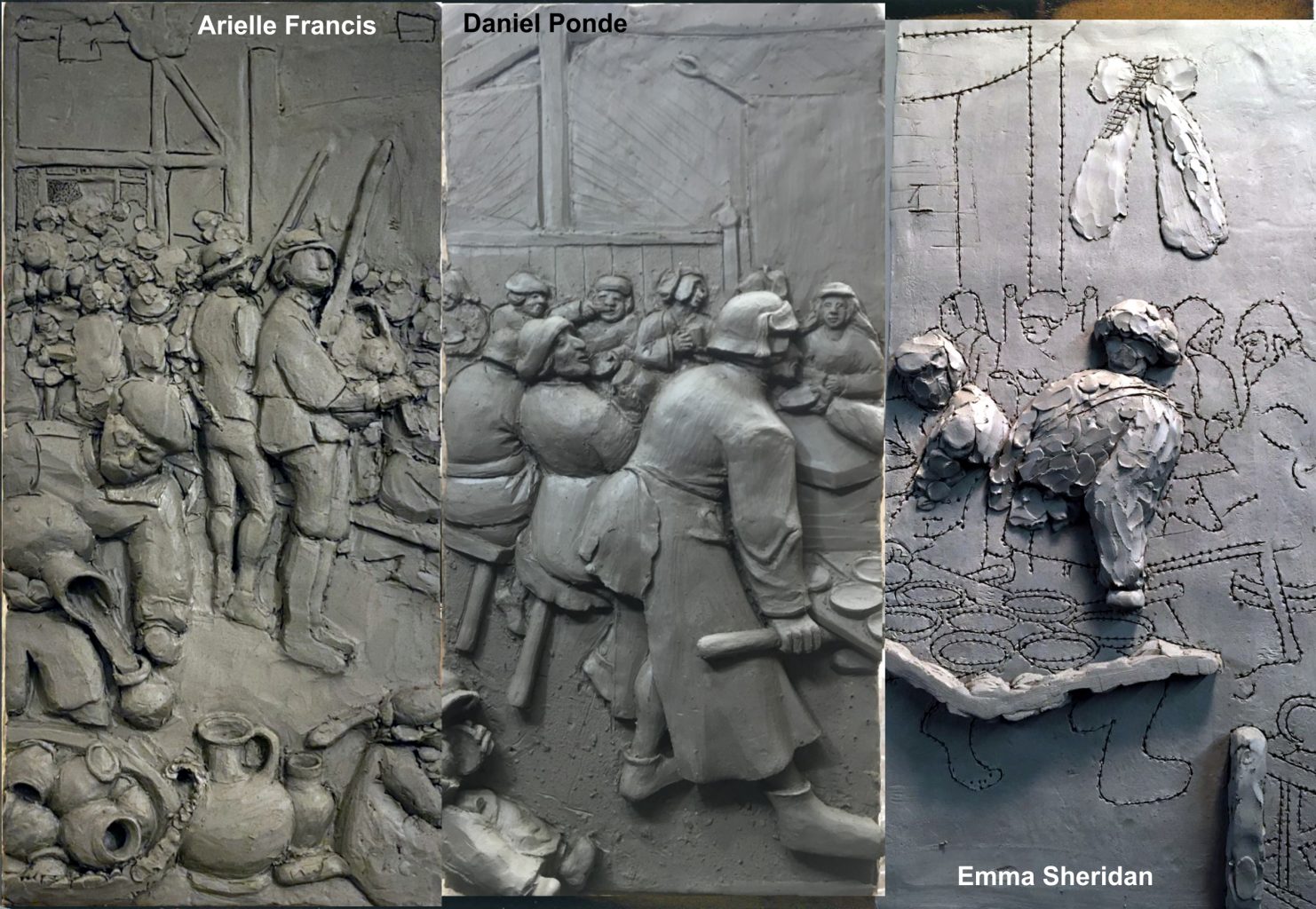 ‘Peasant Wedding’ by Pieter Bruegel the Elder, modelled by Historic Carving 2nd year students Arielle Francis, Daniel Ponde and Emma Sheridan.
‘Peasant Wedding’ by Pieter Bruegel the Elder, modelled by Historic Carving 2nd year students Arielle Francis, Daniel Ponde and Emma Sheridan.
The fact that the students had to transcribe the complex pieces into relief form from a two-dimensional image, rather than a pre-existing relief, made the brief all the more challenging. As well as transcribing the paintings, students were asked to thoroughly research the period and style of the works.
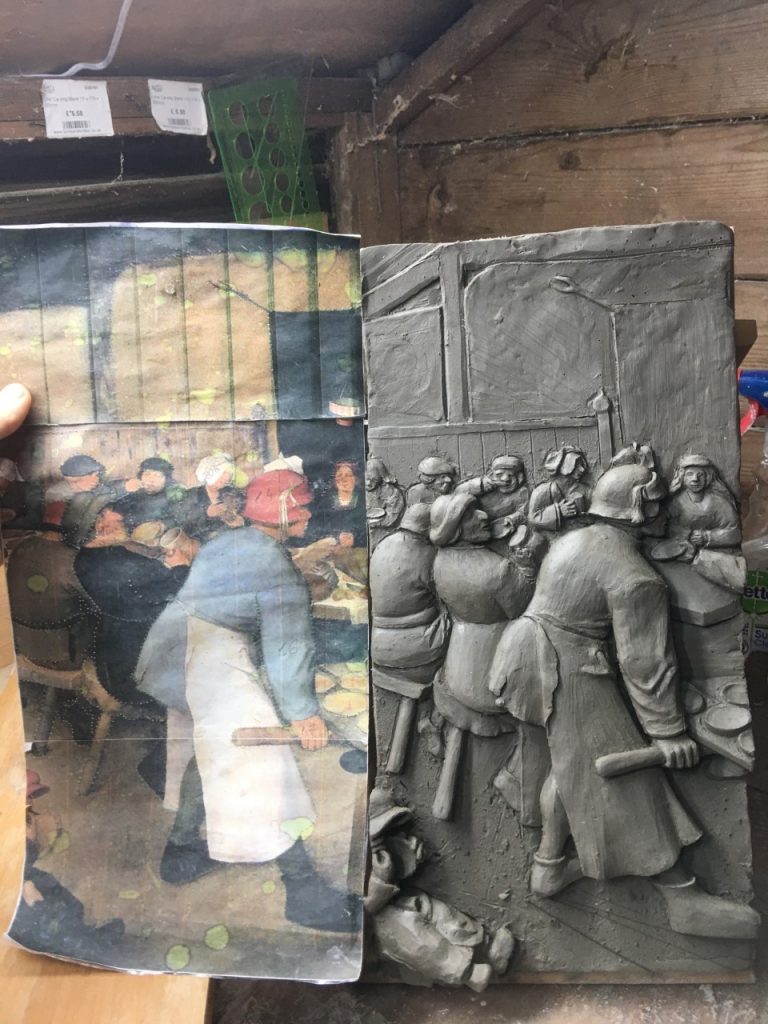
Section of Bruegel’s painting next to Daniel Ponde’s transcription
Supported by Sculpture, Modelling and Casting Tutor, Kim Amis, students had 12 days to model their relief in clay. The process includes carefully making an appropriate wood and wire structure, adding the clay base, transferring the image onto the clay using a pro needle to outline the main shapes, and then developing and modelling the image, planning and sculpting the appropriate depth levels.
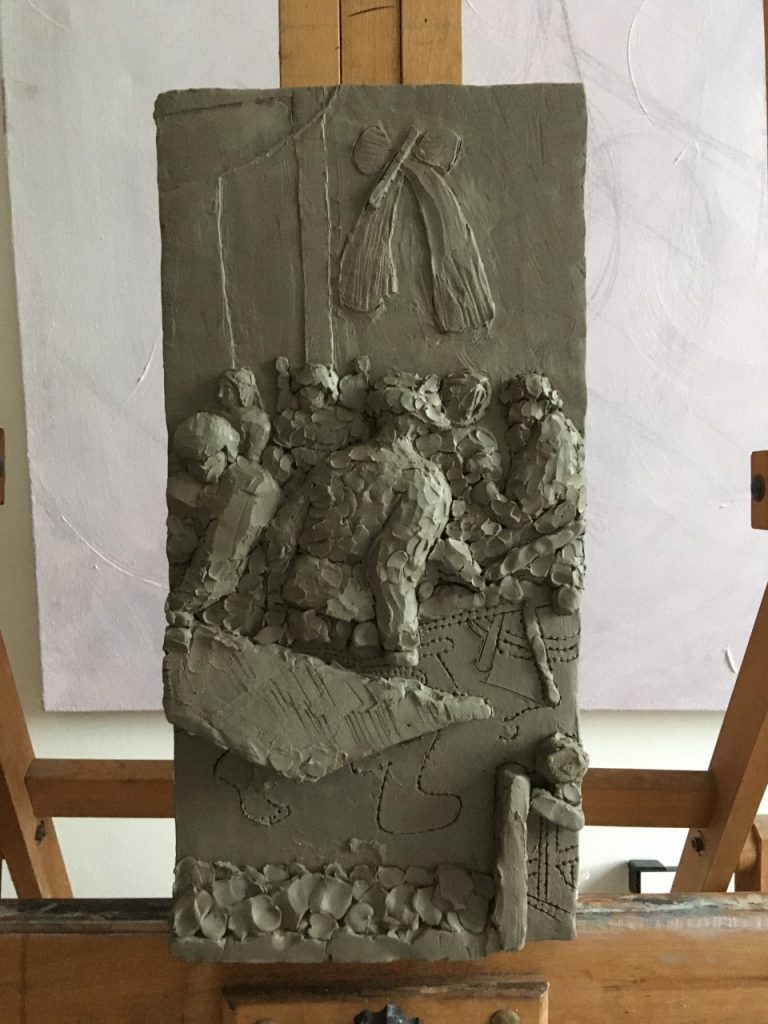
Emma Sheridan’s section of ‘Peasant Wedding’ in development
As the project concluded, photographs of each section were positioned together to form a transcription of both the full paintings, with rather impressive results!
Modelling in clay is a key part of the historic processes of carving a relief in either stone or wood – a technique that was used by ancient civilisations and is still prevalent today.
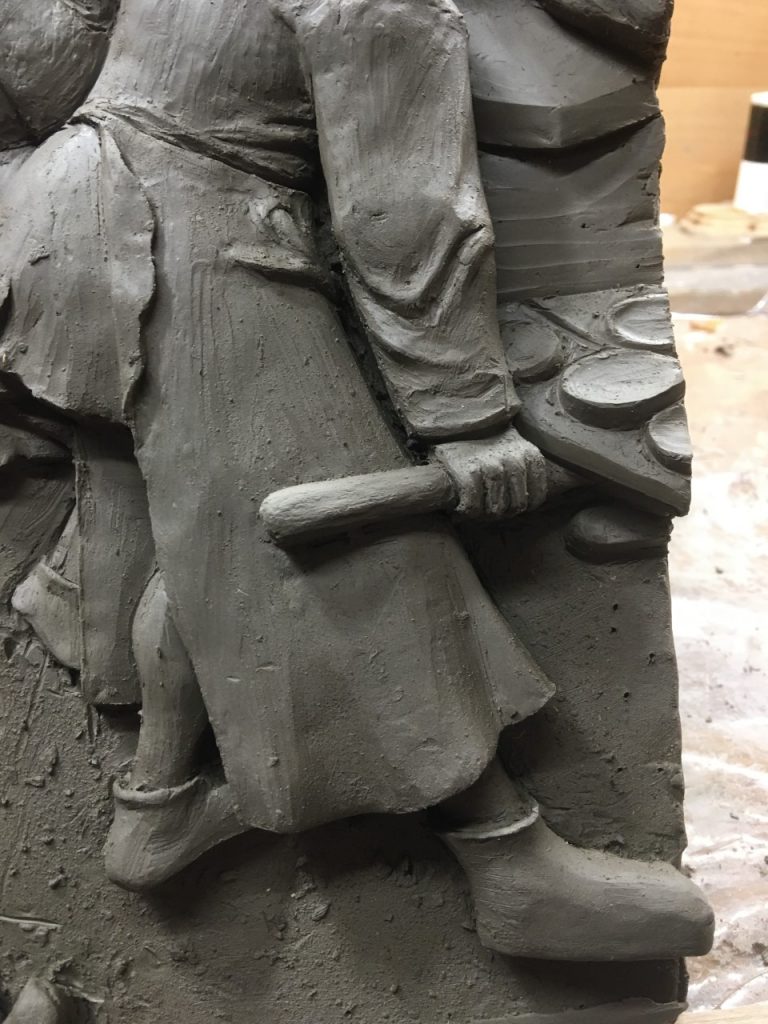
Detail from Daniel Ponde’s relief


